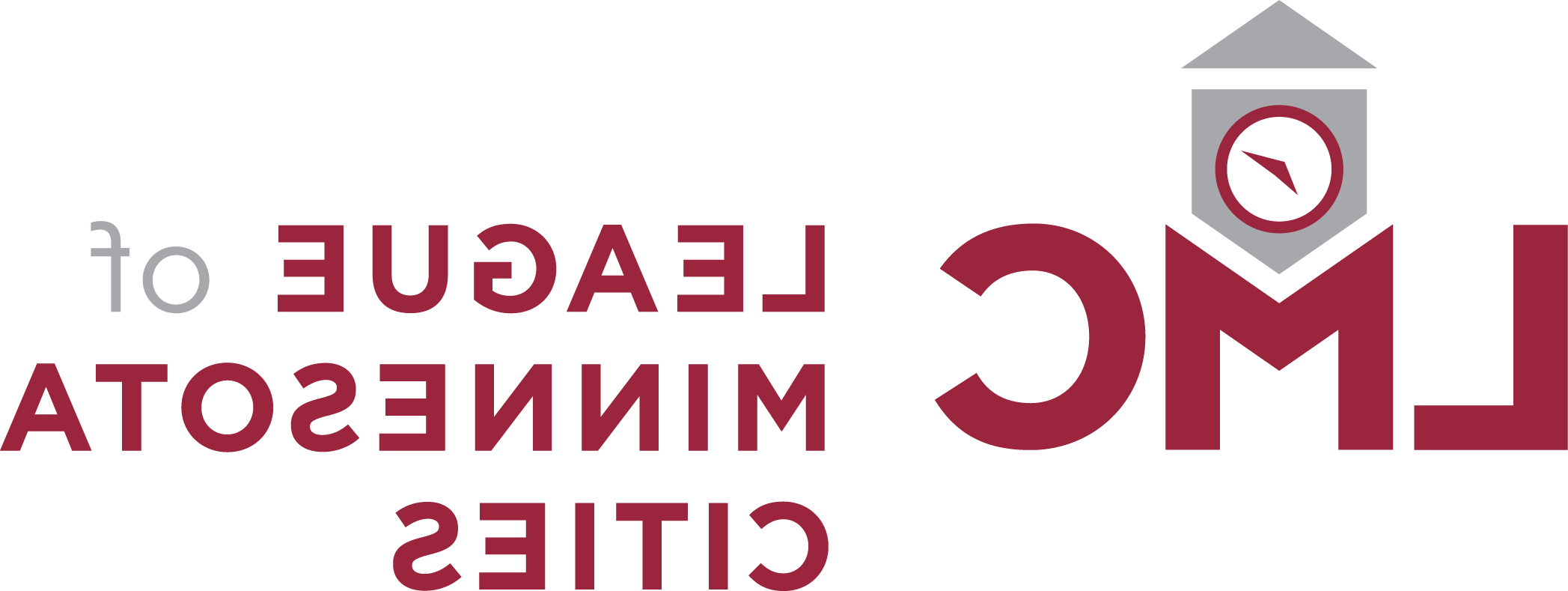View a list of models and other documents used in this discussion.
Reporting
What injuries to report
The Minnesota workers’ compensation statute requires the employer to report all injuries and illnesses that employees believe are work-related (Minn. Stat. § 176.021). If an employee claims a work-related injury, report it to the League of Minnesota Cities Insurance Trust (LMCIT) along with all related information. LMCIT will investigate and decide whether any workers’ compensation benefits are payable to the injured employee.
The employer should not deliberately interfere or try to prevent an employee from seeking workers’ compensation benefits. Doing so could leave the employer responsible for workers’ compensation benefits plus triple damages to the employee (Minn. Stat. § 176.82).
The employer is required by law to post the name and address of its workers’ compensation carrier where all employees can easily see it (Minn. Stat. § 176.139).
When to report an injury
Employee
An employee must report an injury to their employer within 180 days of its occurrence (Minn. Stat. § 176.141). The employer must then report the claimed injury to LMCIT. It is neither the injured employee’s nor the employer’s insurance agent’s responsibility to report the injury to LMCIT.
Employer
If an employee is killed or suffers a life-threatening injury (amputation of limb, massive internal injuries, and so on), it must be reported to LMCIT within 24 hours of the occurrence so it can be submitted to the Minnesota Department of Labor and Industry (DLI) within its 48-hour deadline (Minn. Stat. § 176.231, subd. 1).
Within eight hours of the occurrence, the employer must also call the Minnesota Occupational Safety and Health Administration (MnOSHA) at (651) 284-5050 or (877) 470-6742.
All other work-related injuries or illnesses must be reported within 10 days of the employer’s first knowledge of its occurrence (Minn. Stat. § 176.231, subd. 1). If the employee’s supervisor or manager knows about the injury, the employer is also considered to have knowledge of the injury. Be sure supervisory staff know their responsibilities.
What forms to use
Mandatory form
The Minnesota workers’ compensation statute requires employers to report all work-related injuries and illnesses on a form called the First Report of Injury (FROI) (Minn. Stat. § 176.231, subd. 1). Directions for completing the form are on the back of the form. LMCIT staff are also available to help employers complete the form.
View the First Report of Injury Form (pdf)
If an employee loses work time (even 10 minutes) due to a work-related injury, it must be reported on the form. In box number 26, enter the date when lost time first happened. If an employee begins to lose time from work after the FROI has been sent, contact the LMCIT Claims Department immediately at [email protected], (651) 281-1280, or (800) 925-1122.
The employer must complete the form and submit it promptly. Do not ask the injured employee or an insurance agent to complete the form. Also, do not wait for the employee to return to work or for medical bills or other information. LMCIT recommends submitting the FROI on the same day the injury is reported, but absolutely do not delay the filing for more than 24 hours. Otherwise, benefit payments could be delayed, and the employer could be penalized by DLI for late reporting (Minn. R. 5220.2530 subp. 6).
Filing a FROI does not mean the employer is admitting liability. It only means a claimed injury or condition, which an employee believes is related to work activities, is being reported.
Optional forms
Supervisor’s Report of Accident
When a new injury is reported, it is important the employer begin an immediate investigation and record the facts of how the injury happened and what body parts were hurt. The Supervisor’s Report of Accident form is not required but should be completed based on the supervisor’s first-hand contact with the injured employee and review of the area where the injury happened. LMCIT believes this form is very helpful in the investigation of the claim. If this form is completed, submit it to LMCIT along with the FROI.
View the LMC model form, Supervisor Report of Accident (doc).
Employee Incident Report
The Employee Incident Report form is completed by the employee following a work-related injury but should not substitute for an in-person interview with the employee or completion of the Supervisor’s Report of Accident form. If completed, this should go with the FROI. If this form is not received from the employee within 24 hours, do not delay the submission of the FROI.
View the LMC model form, Employee Incident Report (doc)
What forms to give the employee
The employer is required by law to give the injured employee a copy of the FROI and the Minnesota Workers’ Compensation System Employee Information Sheet (Minn. Stat. § 176.231, subd. 2).
View the Workers’ Compensation System Employee Information Sheet for LMCIT Members (pdf)
Although not required, the employee should also receive a copy of the Employee Rights and Responsibilities poster.
How to report an injury
Report workers’ compensation injuries using an FROI form. Send the form, along with any other optional reports the employer or employee has completed, to LMCIT. Always keep copies for the employer’s records.
Claims can be submitted to LMCIT through an online submission form or by email, fax, mail, or phone.
View LMCIT’s reporting methods
After reporting
Claim adjuster responsibilities
Upon receipt of the FROI, LMCIT will assign the claim to a claim adjuster, who will investigate the claim and decide liability under the workers’ compensation statute. An adjuster will be in contact with all appropriate parties within one business day of receipt of the claim. Within 10 days, the adjuster will communicate whether the claim has been accepted and file all necessary paperwork.
If the claim is accepted, the adjuster will calculate and pay medical and/or lost time benefits as defined under the workers’ compensation statute. The injured employee may be entitled to some or all of the following benefits:
- Medical benefits come with no cap under the workers’ compensation statute (Minn. Stat. § 176.135), but medical providers are subject to a maximum fee (Minn. Stat. § 176.136).
- Indemnity benefits, or more commonly known as lost time benefits or wage replacement, are based on the individual’s actual earning from all employment (Minn. Stat. § 176.011, subd. 18).
- Temporary total disability is paid when an employee is completely disabled from work for a temporary period of time (Minn. Stat. § 176.101, subd. 1).
- Temporary partial disability is paid when an employee receives less than their pre-injury wage (Minn. Stat. § 176.101, subd. 2).
- Permanent partial disability is paid when a disability rating is provided by a treating physician (Minn. Stat. § 176.101, subd. 2a).
- Permanent total disability is paid when an employee is permanently restricted from employment (Minn. Stat. § 176.101, subd. 4).
- Death benefits (Minn. Stat. § 176.111).
- Rehabilitation benefits may be granted if the employee requests, and the employer agrees, that consultation services of a qualified rehabilitation consultant (QRC) be received (Minn. Stat. § 176.102). If the employee qualifies, rehabilitation services may be provided. Generally, a QRC is required if the employee is not back to work at 90 days from the date of injury.
Besides paying medical and/or lost time benefits, the adjuster will also maintain at least bi-weekly contact with the employer and employee; help the employee in getting appropriate medical care; and communicate with all other parties involved, such as the medical provider and case worker.
Learn more about LMCIT coverage in the LMCIT Workers’ Compensation Coverage Guide (pdf)
Employer responsibilities
It is the responsibility of the employer to update the claims adjuster with any information that may directly affect the handling of the claim. This includes, but is not limited to, reporting an employee’s return to work (whether that be part-time or full-time), secondary employment, activities outside the employee’s restrictions, and health or personal issues.
Do not pay medical bills for an employee’s work-related injuries. Doing so may be illegal and by paying a bill, the employer may be legally accepting liability for an injury that is not work-related. If the injury is work-related, LMCIT can often pay less than what the medical provider charges because of the medical fee schedule (Minn. R. 5221).
Quickly send to LMCIT all injury-related medical bills the employer or employee receives. Before paying, LMCIT will request medical records to make sure the bill is related to the work injury. Medical providers often bill only one party, so if the employer has received a bill, it probably means LMCIT has not. The law allows up to 30 days from the date LMCIT receives those records to pay a bill (Minn. Stat. § 176.221).
Return to work
In cases where an injured employee is unable to perform their full, regular job duties, the primary medical provider should provide a report of work ability after each appointment. Ideally, appointments should be scheduled at least every other week. Failure to attend medical appointments can jeopardize benefit entitlement.
After every appointment, the employee should give the employer a work ability form, which both parties should review together. Restrictions should be discussed to determine whether accommodations can be made to return the employee to work.
View the LMC model form, Work Ability/Return to Work (doc)
If the employer can accommodate the restrictions and offer light duty work, complete the Job Demands and Employer Job Offer forms. These forms will document what the restrictions are, what work is being provided, and how long the restrictions are in effect. The forms should be updated every time there are changes on the work ability form.
View the LMC model form, Job Demands (doc)
View the LMC model form, Employer Job Offer (doc)
The employer should always call their claim adjuster if the employee does not return to work as scheduled or if there’s a change in work status due to updated restrictions. If the employee can return to work fully, also call the adjuster. LMCIT can discontinue lost time benefits and avoid the possibility of overpaying the employee.
Injury management
The most important aspect of injury management is knowledge of the injured employee’s progress through the medical treatment plan. Progressive movement should be expected, and early intervention should be applied when an employee is not making progress. Lack of progress can be the result of failure to attend medical appointments, inappropriate treatment, or too much physical activity. Collaborative effort on the part of the employer and the claim adjuster is extremely important.
The employer should not ignore injured employees. There should be regular communication. If an employee is losing time from work, it’s important the employer keep them mentally connected to their job. If possible, provide light duty or part-time work to help the employee return to a healthy and productive environment. This is not only good for employees, but it also helps reduce claim costs.
LMCIT offers safety services that can be tailored to help prevent work-related injuries. Loss control representatives are available for consultation regarding safety in the workplace. They can also help with OSHA compliance and regulations and the development of accident prevention and loss control programs. These services are at no additional charge to LMCIT members.
Learn more about LMCIT’s loss control programs
Models and other documents used in this discussion:
- Employee Incident Report, LMC model form (doc)
- Employer Job Offer, LMC model form (doc)
- Job Demands, LMC model form (doc)
- Supervisor Report of Accident, LMC model form (doc)
- Work Ability / Return to Work, LMC model form (doc)
- Workers Compensation Employee Rights and Responsibilities, MN Dept. of Labor and Industry poster (pdf)
- Workers Compensation System Employee Information Sheet (pdf)

